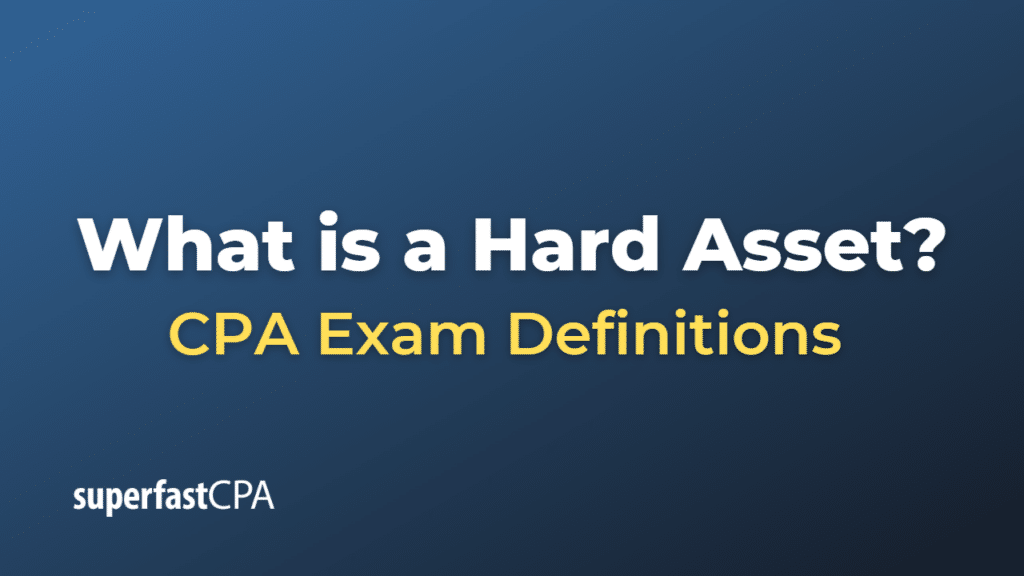Hard Asset
A hard asset is a tangible or physical item or property that has intrinsic value due to its substance and properties. These assets are typically characterized by their ability to hold value over time and are often used as a hedge against economic downturns or inflation. Examples of hard assets include:
- Real Estate: This includes land, residential properties (like houses and apartments), commercial properties (like office buildings and shopping centers), and industrial properties (like factories and warehouses).
- Precious Metals: Gold, silver, platinum, and other precious metals are considered hard assets due to their inherent value and historical role as stores of value.
- Natural Resources: Oil, natural gas, coal, and other commodities are hard assets.
- Art and Antiques: High-quality pieces of art, antique furniture, or other historical items can hold significant value and appreciate over time.
- Collectibles: Rare items like coins, stamps, wine, classic cars, and other collectibles can be considered hard assets.
Hard assets are different from soft assets, which are intangible assets like stocks, bonds, patents, copyrights, or brand reputation. While hard assets are often seen as a safe haven during economic uncertainty, they also come with their own set of risks, such as the cost of maintenance, physical depreciation, or potential illiquidity.
Example of a Hard Asset
Let’s take the example of a successful businesswoman named Jane.
Jane has a well-diversified portfolio of investments that includes stocks, bonds, and mutual funds. However, as part of her wealth preservation and growth strategy, she also invests in hard assets.
- Real Estate: Jane owns several rental properties across the city. These properties not only appreciate in value over time, but they also generate regular rental income.
- Precious Metals: Jane has a collection of gold bars and coins. Gold is seen as a store of value and can serve as a hedge against inflation or economic downturns.
- Artwork: Jane has purchased several pieces of art from well-known and up-and-coming artists. Over time, the value of these art pieces has appreciated, making them a good investment.
- Collectibles: Jane is a wine enthusiast and has built a collection of vintage wines. Rare and vintage wines can increase in value over time, especially those from renowned vineyards or exceptional years.
Each of these is an example of a hard asset. They are physical, tangible items that hold intrinsic value. Jane uses these hard assets as part of her overall wealth strategy, helping to diversify her portfolio and protect against market volatility.













